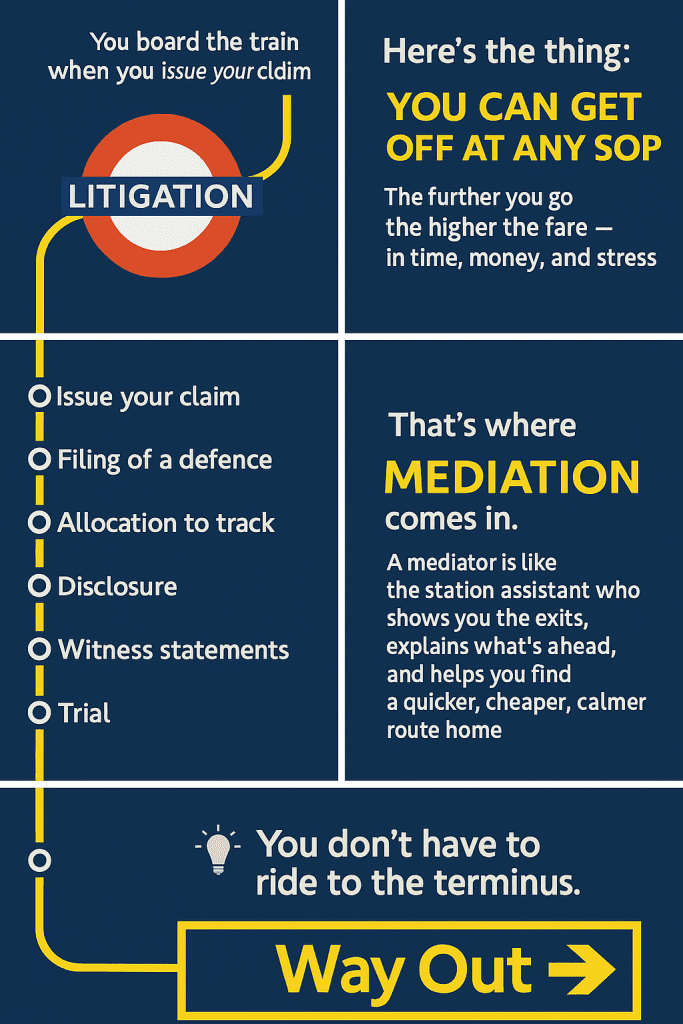
Finding the Way Out: What the London Underground Can Teach Us About Litigation
Once again, I’ve been inspired to write an article from a random sign I spotted on my travels. This time, it’s the humble “Way Out” sign on the London Underground.
A simple, bright yellow arrow. But it made me think — litigation is like a journey on the Tube.
The Journey of Litigation
When you board a train, you know roughly where you want to go. In litigation, that’s the point where you instruct your lawyers, set your course, and begin the process.
But here’s the thing: you can alight at any time.
You don’t have to stay on until the bitter end of the line. The further you go, the more time and money you invest. The fare — in terms of cost, stress, and risk — gets higher.
Mediation: The Station Assistant with the Map
In a busy station, finding the exit isn’t always obvious. That’s when the friendly station assistant points you towards the “Way Out.”
A mediator plays the same role. They can’t force you off the train, but they can help you see where the exits are, explain what’s ahead, and show you the route to resolution.
Sometimes, the way out is right in front of you — you just need someone to help you spot it.
Avoiding the End-of-the-Line Shock
Too many litigants ride the train all the way to the last stop — trial — only to realise the cost has far exceeded their expectations. By then, the journey is over, but so is a large portion of their resources.
Choosing to alight early through mediation can save:
- Money – avoiding spiralling legal fees
- Time – reaching resolution sooner
- Stress – ending the uncertainty earlier
Final Thought
Next time you’re in a dispute, imagine you’re on a Tube train. Look up. You might see a bright yellow “Way Out” sign — and if you do, take it. You don’t have to ride to the terminus.
